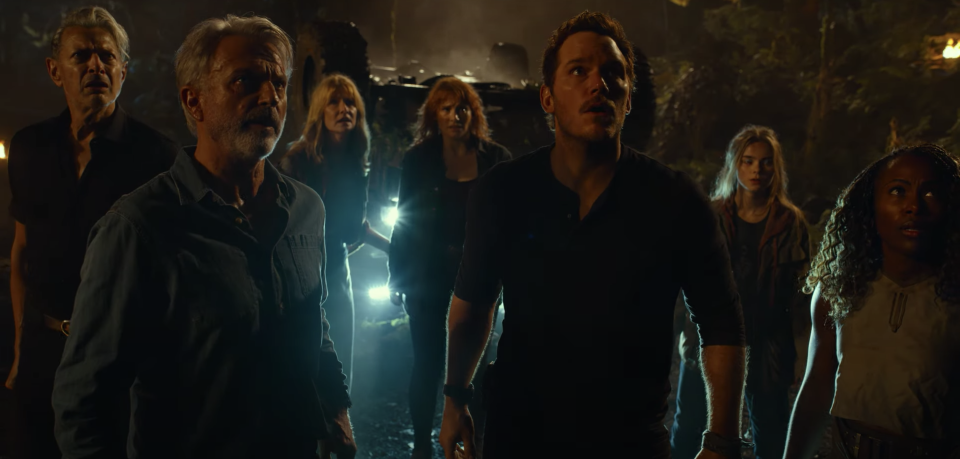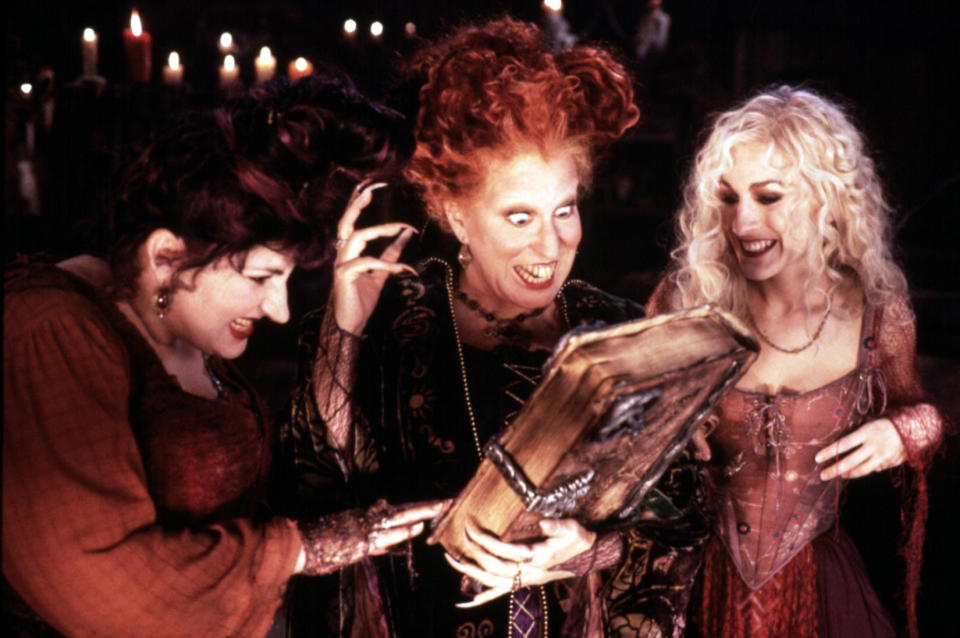This Year, Upfronts Discovered the Movies — and That Changes Everything

Upfronts can be comforting and/or dull in their familiarity. Here come the old TV shows, the new ones, and Jimmy Kimmel. (Lizzo, that was new.) Variation isn’t necessary because the goal remains the same: Hold an advertiser’s attention while you reach into their budgets. Upfronts go where media buyers go and from here on out, one place they’re going is to the movies.
This year, the upfronts accommodated the (ad-supported) streamers and all that they contain — including movies, both ones original to the platforms as well as those that receive a theatrical release. Every major streamer has announced its intention (if not the reality) of lower-priced AVOD tiers, all but promising Wall Street that advertising will become a primary revenue stream. That means Disney, NBCUniversal, and Paramount Global had a lot more to talk about — and that advertisers will be keeping a much closer eye on their movie slates.
More from IndieWire
NBCUniversal CEO Jeff Shell’s opening remarks at his company’s May 16 presentation started off business as usual: NBC has the best ratings among the 18-49 demo, Bravo and USA anchor its cable portfolio, and here’s Peacock the streamer.
“We also have one of the two leading film studios in Hollywood,” Shell said. “Why am I mentioning film at the upfront? I don’t think it’s ever been mentioned before. Well, that’s because for the first time this year, a major studio is taking its movies from theatrical straight to an ad-supported platform, as our Universal Pictures films go from HBO to Peacock in its first window, pay-one window.”
A key part of Universal’s playbook was last year’s decision to end its deal with HBO. Since 2005, the studio’s theatrical movies went to the premium service after they were available on DVD and digital rental. After the launch of HBO Max, Universal realized it was providing some of its most valuable assets to a direct competitor. Taking a page from Disney’s playbook, the studio wanted consumers to know that “Jurassic World: Dominion” would be available on Peacock within four months of its theatrical release. With a combination of subscription and advertising revenue replacing licensing fees, ownership is essential.

Universal/screenshot
And with that, the die is cast for the streaming era’s new world order. In the past, formats were only one difference between TV and movies. Advertisers paid for TV, and the public paid for movies — except for the relatively few titles that made their way downstream to networks. Going forward, advertisers will be interested in the release strategy of “Fast and Furious X” in the same way that they want to know which show scored “The Voice” as its lead-in .(This year, it was the “Quantum Leap” reboot.) It also emphasizes that while studios still love a great box-office gross, it represents only a piece of a movie’s moneymaking potential: Advertisers now care about box office, too.
There are still some key differences between buying commercial time on an episodic series and a streaming movie. For now, ads will generally stream ahead of films, which have longer run times than TV shows. Also, there are more shows than movies, so the opportunities to advertise heavily favor series. Of course, capitalism, competition, and greed lead to innovation, so this could change.
Shell’s Peacock is experimenting with in-scene ads — essentially, product placement inserted into an actual scene from a TV show or film. That requires some real tech-forward planning and execution, especially if the goal is to make the experience seem seamless. The streaming service is also playing with shared-screen ads, which borrow some of your screen’s glass — usually via a border — for its friends in the advertising community. That product can be more comfortably and regularly deployed during televised events, like a sporting event.
The lazy man’s approach to finding new ways to monetize films would be an appropriately timed ad break in the middle. (Call it an “intermission,” for the cinephiles!) Or, audiences can just pay extra for the commercial-free tier.
Universal is also producing straight-to-Peacock original films, like Tina Gordon’s youth-choir comedy “Praise This” produced by Will Packer, fresh off his stint putting overseeing this year’s Oscars.
“You don’t typically hear about movies at presentations like this,” Packer told the Radio City Music Hall audience. “If streaming series are the heart of the Peacock strategy, then movies are the backbone, the spine that holds it all together and lets audiences know they can get it all in one place. Films, both new releases and timeless favorites, continue to play a role in Peacock’s success.”
The appeal of timeless classics also drives Disney’s streaming film strategy. At Disney’s upfront presentation May 17, production president Sean Bailey said the studio will release 12 straight-to-Disney+ films in 2022. Among them is “Hocus Pocus 2,” which reunites Bette Midler, Sarah Jessica Parker, and Kathy Najimy three decades after the original.

Everett Collection
“This is a movie that viewers return to year after year,” he said. ‘In fact, it’s one of the most watched Disney live-action films on Disney+ in terms of hours streamed, it’s also incredibly popular every time it airs on Freeform.”
To the audience of ad executives, that meant one thing: Here’s the chance to make money on a property that has already proven itself on linear and streaming alike. Disney executives briefly touched on the company’s plans to add an ad-supported tier to Disney+ later this year, but offered no new details.
This Disney presentation was the first upfront to include Disney+ and the first with a presentation by Marvel chief Kevin Feige. He offered previews of the studio’s upcoming slate with its usual array of guaranteed box-office performers that will soon be available to advertisers on Disney+.
Last month’s CinemaCon indicated a lot of optimism for the idea that films will move from theaters to ad-supported streaming. It’s well and good to say good box office is good marketing, but advertisers up the ante: They’re going to want those numbers in the same way they want ratings. No box office, no numbers.
That said, streamers may also be expected to provide the kind of consistent, deep-dive ratings intel that Nielsen has provided TV advertisers for the last 72 years — it’s unlikely that squishy Top 10 charts and hours streamed will cut it. However, that saga will be for another day.
Tony Maglio contributed reporting.
Best of IndieWire
New Movies: Release Calendar for May 20, Plus Where to Watch the Latest Films
Every Palme d'Or Winner From the Cannes Film Festival, Ranked
The Best Sex Scenes of the 21st Century Ranked, from 'Midsommar' to 'Titane'
Sign up for Indiewire's Newsletter. For the latest news, follow us on Facebook, Twitter, and Instagram.


